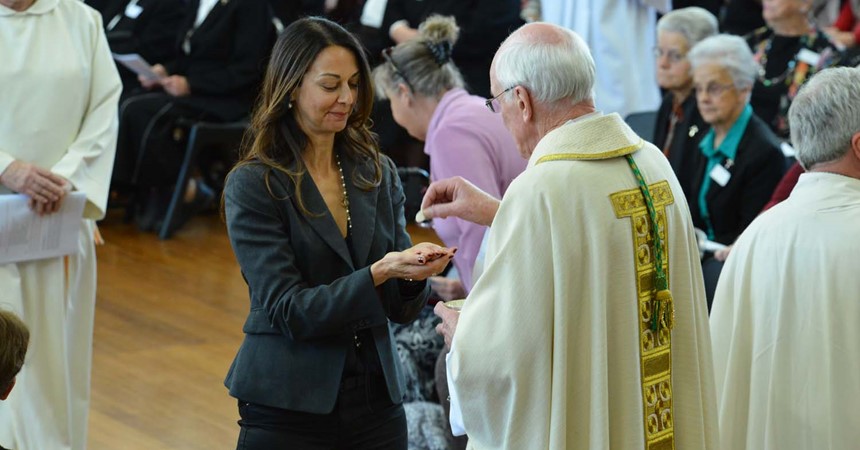To be ‘Catholic’ is to acknowledge the difference amongst us. And while it is true to say the Communion Rite is the same everywhere, it will also be marked by legitimate difference that is shaped by the design of a church and the nature of a particular community celebrating mass. This difference leaves some of us wondering as to the rightness or wrongness of how things are done.
This is especially so of the Communion Rite, as indicated by queries received by our diocesan liturgy office. Variances in the duration of the sign of peace, timing of the breaking of the bread and distribution of Communion can all add richness to a community celebration, and perhaps some angst as well. The Diocesan Liturgy Council’s response to such queries is the titled, 'Pastoral Guidance for the celebration of the Communion Rite at Mass', launched late 2018 (click here for online version).
This document is not a directive of hard and fast rules. Rather, it is a collation of the liturgical principles that shape this rite, and some guidelines and recommendations that hopefully inform each community’s discernment about how they celebrate the Communion Rite. Local tradition and practicality is important for good liturgy, which is why the Liturgy Council has been exploring this document in conversation with parish and school communities around the diocese over the past two months.
The conversations in the Upper Hunter and the Manning have been well-attended. The diversity of communities and participants has shaped rich and thought-provoking conversation. At Forster, the conversation engaged in deep reflection on the meaning of this rite was prompted by the faith sharing of some participants. This sharing challenges all of us to see, in the guidance, an opportunity for every community to consider whether its celebration of the Communion Rite embodies this deep and rich meaning of what we are doing together when we gather for eucharist.
The regional nature of the conversations has been most beneficial, as parishes and schools share the different challenges they face, listen to each other’s questions, and contribute to ideas about refining the way we celebrate this rite. Members of the Liturgy Council facilitate the conversation. Beyond that, they participate and share along with everyone else. It has been very fruitful for council members to listen to local experience and take note of suggestions for improving the guidance the document offers.
The final conversation to explore the Communion Rite guidance document is on Saturday 31 August, 10am at the diocesan office in Newcastle West. The layout will, again, be a comfortable space to share-and-compare and draw upon group wisdom over a cuppa. This is a great opportunity for school and parish ministers, lay and ordained, to find peace of mind around some niggling issues. Attendance is free and no technology is required.
- RSVP to murphy@mn.catholic.org.au or 4979 1134 for catering purposes.
- Download guidance booklet (printed copy is provided at session).

